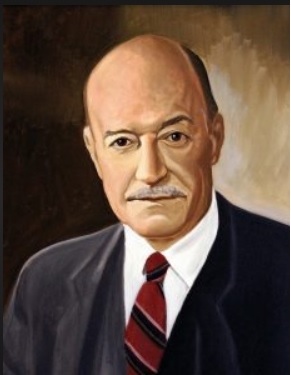Biography of Henry Stuart Hazlitt
Henry Stuart Hazlitt was a leading American journalist who lived between 1894 and 1993. He wrote largely on business and economics. He had authored great articles for leading newspapers and magazines such as Conservative Circles, The Wall Street Journal, The American Mercury, The Nation, Newsweek, Libertarian and The New York Times.
He first started his career as an academic teaching philosophy and psychology. He was an undergraduate student at City College in New York but dropped out after a short period in order to support his mother who was widowed twice.
As a teenager, Hazlitt worked as a secretary to the managing director of The Wall Street. He was very interested in the field of economics and that is where he later made a lot of contribution. He was influenced in this direction after reading the book: The Common Sense of Political Economy by Philip Wicksteed.
At the age of 21 years Henry Stuart Hazlitt published a book titled Thinking as a science. He has had a reputation as one of the few economists who can write very well.
For 12 years starting from 1934,Henry Stuart Hazlitt worked as a principal editor and writer on economics and finance for the popular New York Times. He was assigned a column and wrote several editorials on economics. He produced a lot of great work during this period.
He later wrote for Newsweek magazine under the column “Business Tides” which lasted from 1946 to 1966. That is a total of 20 years.
Ludwig von Mises also influenced his writing in economics to a large extent. He is thus credited with introducing Austrian School of economics on English-speaking world. In 1938, Hazlitt was the one who reviewed Socialism which was written by Mises. The review was published on the New York Times newspaper.
Hazlitt played a great role in helping Von Mises get his work published as editorials when he moved to the United States of America. He was escaping persecution of the Jewish community by the Nazis. He further helped Mises get a teaching position at New York University.
Hazlitt wrote in a simple way hence introducing complex ideas in economics to the general public. For instance, he collaborated with John Chamberlin and Max Eastman to introduce Mises’s The Road to Serfdom to the laymen.
Through writing articles Hazlitt became famous. He also debated prominent personalities to gain more exposure to the rest of the world. Among the leading figures he had interviewed include, Secretary of State Dean Acheson and Vice President Henry Wallace.
To illustrate how powerful Hazlitt was, when he left Newsweek, he was replaced by 3 University professors. These were: Henry Wallich, Milton Friedman and Paul Samuelson.
The University of Francisco Marroquin awarded Hazlitt a doctorate degree in Guatemala. His greatest written work titled Economics in One Lesson (1946) as sold over a million copies worldwide. The book has been translated into numerous languages (10) in order to reach the wider world. The work was even praised by F.A. Hayek, a prominent Austrian Economist.
Finally, Hazlitt published more work on other topics such as inflation in 1984 and Welfare State in 1969.
Read More:


